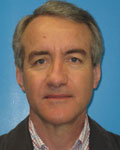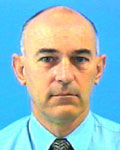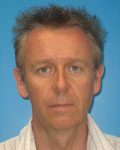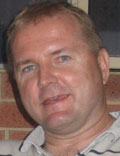The challenges of seismic acquisition in a remote and sensitive marine environment: Scott Reef, Western Australia
Mark Taylor A , Nick Fitzgerald A , Jeremy Fitzpatrick A and Ralph Weiss AWoodside Energy Ltd 240 St George’s Terrace Perth WA 6000
The APPEA Journal 49(2) 573-573 https://doi.org/10.1071/AJ08046
Published: 2009
Abstract
Woodside Energy Ltd, as operator of the Browse LNG Development, recently acquired two seismic surveys at Scott Reef, Western Australia. The surveys were important steps towards acquiring full seismic coverage over the Torosa gas field, part of which underlies Scott Reef
The Maxima 3D marine seismic survey, conducted in late 2007, was a conventional towed streamer survey. This was followed in May 2008 by the Gigas 2D transition zone survey in the shallow waters of north Scott Reef, and Woodside’s first experience with ocean bottom cable (OBC) seismic technology. Each survey presented unique challenges during the planning, regulatory approval and acquisition stages.
Scott Reef comprises two coral atolls located on the outer continental shelf of northwest Australia, approximately 400 km north of Broome. The only permanently emergent land is a small sand cay (Sandy Islet, Fig. 1), although the reef crests of both atolls are exposed at low tide.
Outside the reefs the seafloor drops away rapidly, with water depths of about 350 m to the east, increasing to more than 1,000 m to the west. South Scott Reef lagoon is open to the north, with water depths increasing to about 50 m before deepening abruptly into the channel between the two reefs.
North Scott Reef lagoon is shallower—generally less than 25 m—and is connected to the ocean by two narrow channels. Semi-diurnal tides with a range of up to 4.6 m produce strong tidal currents in and near these channels. Small, steep-sided coral heads, or bombies, are common throughout the lagoons, especially in water less than 25 m deep.
keywords: Seismic survey, ocean bottom cable, environmental impact assessment, Scott Reef, Woodside, Browse Basin, coral reef

Mark Taylor completed a BSc (Hons) in geophysics at the University of Tasmania in 1978 and joined Esso Australia Ltd in 1979. During thirteen years at Esso he worked on exploration projects on Australia’s southern and northwest margins, and in central Africa. In 1992 he joined Woodside Energy Ltd, where he has worked on exploration, appraisal and development activities on the North West Shelf and in the Gulf of Mexico, Otway Basin and the Browse Basin. He is currently lead geophysicist in the Browse LNG Development team. Member: AAPG, SEG, PESA and AIG. Mark.Taylor@woodside.com.au |

Nick Fitzgerald has 30 years of industry experience in seismic acquisition, seismic data processing and reservoir geophysics. He graduated from the University of Auckland with a BSc and MSc and joined Seismograph Services Ltd in New Zealand before transferring to Australia. After a short time with GECO he joined Delhi Petroleum in Adelaide, and then Santos Ltd. Since joining Woodside Energy Ltd in 1997 he has held various positions in seismic processing, quantitative interpretation and reservoir geophysics, and project management. In 2003 he became manager of geophysics, Libya, as part of Woodside’s country entry team. Nick then returned to Australia in mid 2007 to take up his current role of chief geophysicist. Member: SEG, ASEG and EAGE. nick.fitzgerald@woodside.com.au |

Jeremy Fitzpatrick has over 20 years experience in exploration geophysics, mainly in data processing and acquisition. He has worked for Woodside for 13 years, including secondments to Woodside Libya in Tripoli and PDO in Oman, where he worked on land operations. Prior to joining Woodside he worked for Geco-Prakla (Schlumberger) in Morocco, South Africa and Australia and for PGS in the UK. He has a BSc (Hons) in geology from the University of Portsmouth (UK) and an MSc (petroleum geology and geophysics) from Imperial College. Member: EAGE and SEG. jeremy.fitzpatrick@woodside.com.au |

Ralph Weiss has over 20 years experience in a variety of geophysical roles including seismic acquisition, processing and interpretation in petroleum and mineral exploration, and development settings. He is currently an operations geophysicist at Woodside Energy Ltd. Prior to joining Woodside nine years ago he worked for Delhi Petroleum, Australia; Gold Fields, South Africa; Anglo American Corporation, South Africa; Rio Tinto, Normandy; and PGS, Australia. He has a BSc in geophysics from Flinders University. Member: ASEG and SEG. ralph.weiss@woodside.com.au |
References
Grebe, C.C., Smith, L., and Reid, C.A., 2009—The effects of marine seismic acquisition in a coral reef environment: results from a multi-disciplinary monitoring program at Scott Reef, Western Australia. APPEA [THIS DVD]Hastings, M.C., Reid, C.A., Grebe, C.C., Colman, J.G., And Hearn, R.L., 2008— The effects of seismic airgun noise on the hearing sensitivity of tropical reef fishes at Scott Reef, Western Australia. Proceedings of the Institute of Acoustics Conference on Underwater Noise Measurement, Impact and Mitigation, 30 (5)


